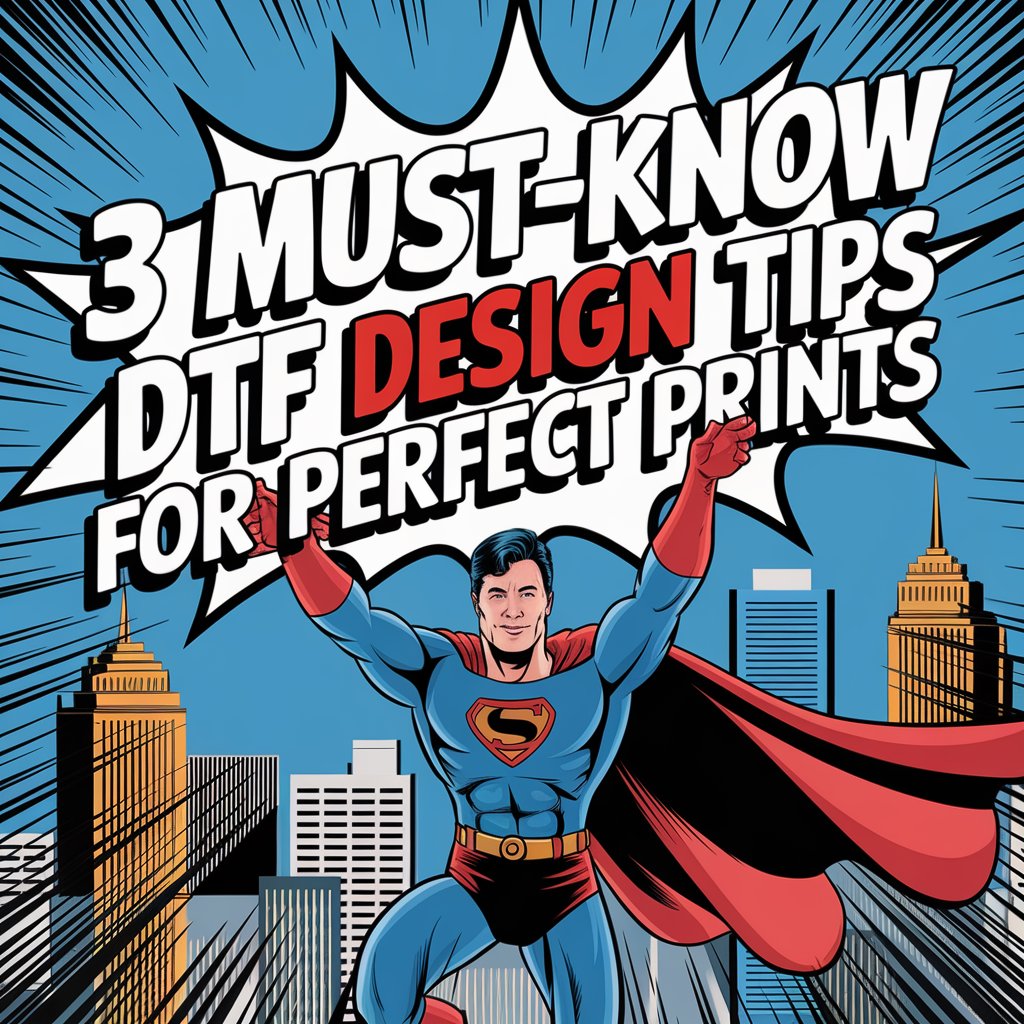Mastering DTF Printing: 3 Essential Design Tips for Perfect Prints
Direct-to-Film (DTF) printing has emerged as a popular method for creating vibrant, high-quality designs on various fabrics. Whether you're a seasoned designer or a beginner, understanding the nuances of DTF printing can significantly enhance your results. In this article, we'll explore three essential tips to help you achieve flawless DTF prints every time!

Table of Contents
- 1. Start with High-Resolution Images: 300 DPI is Key
- 2. Utilize Open or Negative Space for Dynamic Designs
- 3. Choose the Right File Format: PNG or PDF
- Conclusion: Elevate Your DTF Printing with These Tips
1. Start with High-Resolution Images: 300 DPI is Key
When it comes to DTF printing, the resolution of your image is paramount. To avoid blurry or pixelated prints, ensure that your images are set to a resolution of 300 DPI (dots per inch). This resolution is ideal for producing crisp, clear designs that translate beautifully onto fabric.
How to Set Your Image to 300 DPI:
- Open your image editing software and load your design.
- Navigate to the Image menu and select Image Size.
- Adjust the resolution to 300 DPI, ensuring that the width and height dimensions are appropriate for your design needs.
By starting with a high-resolution image, you lay a solid foundation for a high-quality print, ensuring that every detail of your design is captured with precision.
2. Utilize Open or Negative Space for Dynamic Designs
Creating designs with open or negative space can add depth and interest to your prints. This technique involves removing certain elements from your design to create a more dynamic and visually appealing result.
Steps to Create Open Space:
- Use the Select tool in your editing software and choose Color Range.
- Click on the area you wish to remove (e.g., black inside a design element) using the dropper tool.
- Ensure the Invert box is checked, then click OK.
- In the Layers panel, click on the Layer Mask icon to create a mask with your selection.
After applying the layer mask, it's crucial to zoom in and inspect your design for any semi-transparent pixels that might have been inadvertently created. Ensure your layer is unlocked, then right-click and select Blending Options.
Refining Your Design:
- In the Layer Style panel, locate the Blend If section.
- Adjust the slider under the Current Layer to remove unwanted colors, such as black, from your design.
This technique allows you to refine your design, ensuring that the final print is clean and professional. By effectively using open space, you can create designs that stand out and capture attention.
3. Choose the Right File Format: PNG or PDF
The file format you choose for saving and exporting your design can significantly impact the final print quality. For DTF printing, PNG or PDF formats are recommended because they support transparency, which is crucial for maintaining the integrity of your design.
Saving Your Design:
- Go to File and select Save As.
- Enter a descriptive file name for your design.
- Choose either PNG or PDF as the file format.
Exporting Your Design:
- Navigate to File and select Export As.
- Ensure the format is set to PNG and that the transparency box is checked.
- Click Export and follow the prompts to save your file.
By using PNG or PDF formats, you preserve the transparency of your design, allowing for seamless integration onto various backgrounds and fabrics. This step is essential for achieving accurate and vibrant prints.
Conclusion: Elevate Your DTF Printing with These Tips
By incorporating these three essential tips into your DTF printing process, you can significantly enhance the quality of your prints. Starting with high-resolution images, utilizing open space, and choosing the right file format are foundational steps that ensure your designs are both visually stunning and professionally executed.
Explore the endless possibilities of DTF printing and take your creative projects to new heights. For more resources and inspiration, visit our website and ignite your journey into the world of DTF printing.
For a thorough understanding of how to heat press DTF (Direct to Film) transfers, explore our in-depth Step-by-Step Guide for comprehensive details and expert insights.
You'll also find a comprehensive guide on how to properly use a Heat Press, including the correct way to Heat Press DTF transfers.
Additionally, we help you understand the difference between various Peel techniques, so you can choose the best one for your needs. Discover more about these Peel methods and their advantages on our blog.





